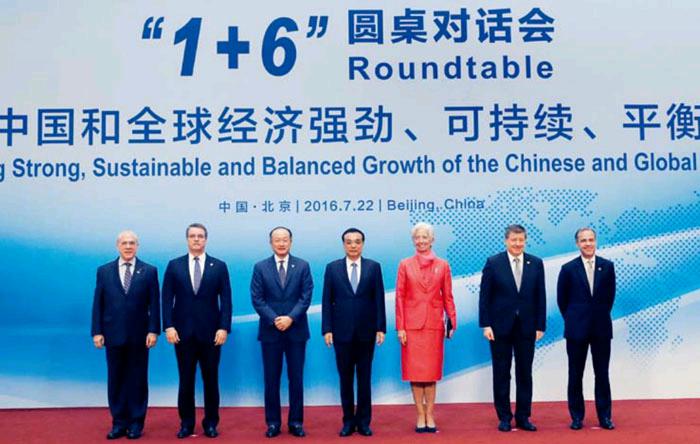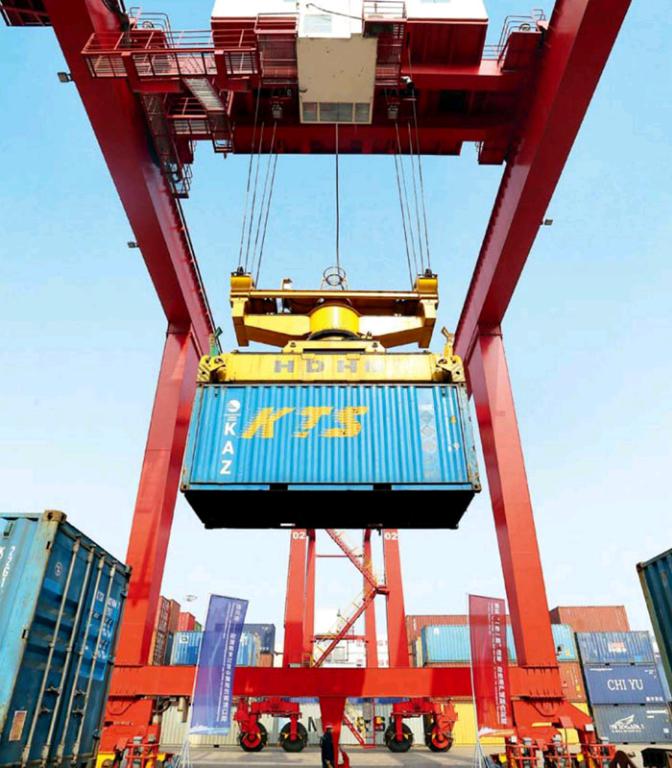Chinese Solutions to the Sluggish World Economy
2017-04-25byMeiXinyu
by+Mei+Xinyu
The world economy and global trade will both maintain sluggish growth, at least for the foreseeable future. The factors that fueled high global economic and trade growth from the 1990s to 2010, especially the first decade of the 21st Century, have disappeared and are unlikely to recover soon.
Why were the world economy and global trade able to see rapid growth in the first ten years of the century? On the one hand, the decade represented a ‘boom period in a long economic cycle; on the other hand, the following specific factors worked together to make the period of euphoria possible:
Technological innovations in realms like IT sprung up and quickly spread across the globe;
The market economy system was widely adopted by almost all economies around the world, and the majority of transitional economies entered a track of economic recovery and growth after surviving a painful decade of transition;
The multilateral trade mechanism and rules of the World Trade Organization (WTO) operated smoothly;

The comparatively loose monetary policies adopted by major Western central banks, especially the U.S. Federal Reserve, created sufficient liquidity for other economies, directly and indirectly, which consequently supported their economic and trade growth;
Western countries—especially the worlds largest buyer, the United States—kept their markets wide open, thus boosting other economies export-oriented growth.
However, the aforementioned favorable conditions are now vanishing. The global economy entered a phase of recession after the outbreak of the U.S. subprime mortgage crisis in 2008. Many believe it will take a relatively long time for the world economy to usher in another round of prosperity, given that the factors backing the worldwide economic boom in the first decade of the century have either faded away or begun reversing.
The world wont see a new technological revolution that can bolster significant economic rebound in the short run;
The stimulating effects of the spread of the market economy system are vanishing;
The loose monetary policies of major Western central banks, including the U.S. Federal Reserve, have already come to an end as their negative side effects became worse and worse. It is only a matter of time before they tighten their monetary policies, which are then expected to remain tightened for a certain period of time;
Trade protectionism and anti-globalization have begun to spring up. Under the Trump administration, the global trade system is expected to enter an era of chaos and turbulence.
Facing such a situation, in what ways will China continue to shoulder even greater international responsibilities? First, it should properly address its own challenges and maintain healthy, steady economic and social progress, thus setting a good example for other countries on the planet: If a country wants to continuously make contributions to the world, it must develop well by itself and then help others.
Over the past decades, Chinas rapid economic development has obviously improved the well-being of people all around the world and facilitated global governance. Chinese-made products have played a crucial role in ensuring that the United States has maintained an “inflation-free economic growth” since the 1990s, and made even greater contributions to improving the livelihoods of people in developing countries.
Meanwhile, through promoting industrialization and developing an export-oriented economy, China has become the worlds largest manufacturer and exporter. Its individual import growth has been two times faster than the global average. Through goods and services trade and outbound investment, China has helped many countries and regions accelerate their economic and social development.
On average, China contributed 14.2 percent of world economic growth during the 10th and 11th Five-Year Plan Periods (2001-2010). In the 12th Five-Year Plan Period (2011-2015), if calculated at 2010 U.S. dollar constant prices, China contributed 30.5 percent of world economic growth, a share bigger than that of any other country. In 2016, China remained the biggest contributor to world economic growth, with a share of 33.2 percent. Amid the uncertainties in the global economy, the healthy, stable development of Chinas economy is a prerequisite for the healthy, stable develop- ment of the world economy.
Global governance can be divided into economic governance and political security governance. In terms of economic governance, China should insist on the principle of free trade. Over a long period after the end of World War II, the United States served as a beacon of global free trade. However, trade protectionism has begun prevailing in recent years, and the Trump administration is likely to adopt aggressive trade policies that will probably exacerbate international trade frictions. It is time for China to become the global beacon of free trade. This is not only because China has become the worlds second largest economy and one of the biggest trading powers, but also because its political system makes it easier to play the role of an advocate of free trade.
China hopes to make as great a contribution as possible to helping the global economy and trade survive the period of sluggish growth. But, whether its wishes can be fulfilled depends on cooperation from its trading partners. China is trying its utmost to create opportunities. But if its trading partners fail to enact instant reforms, such opportunities will exist in vain.